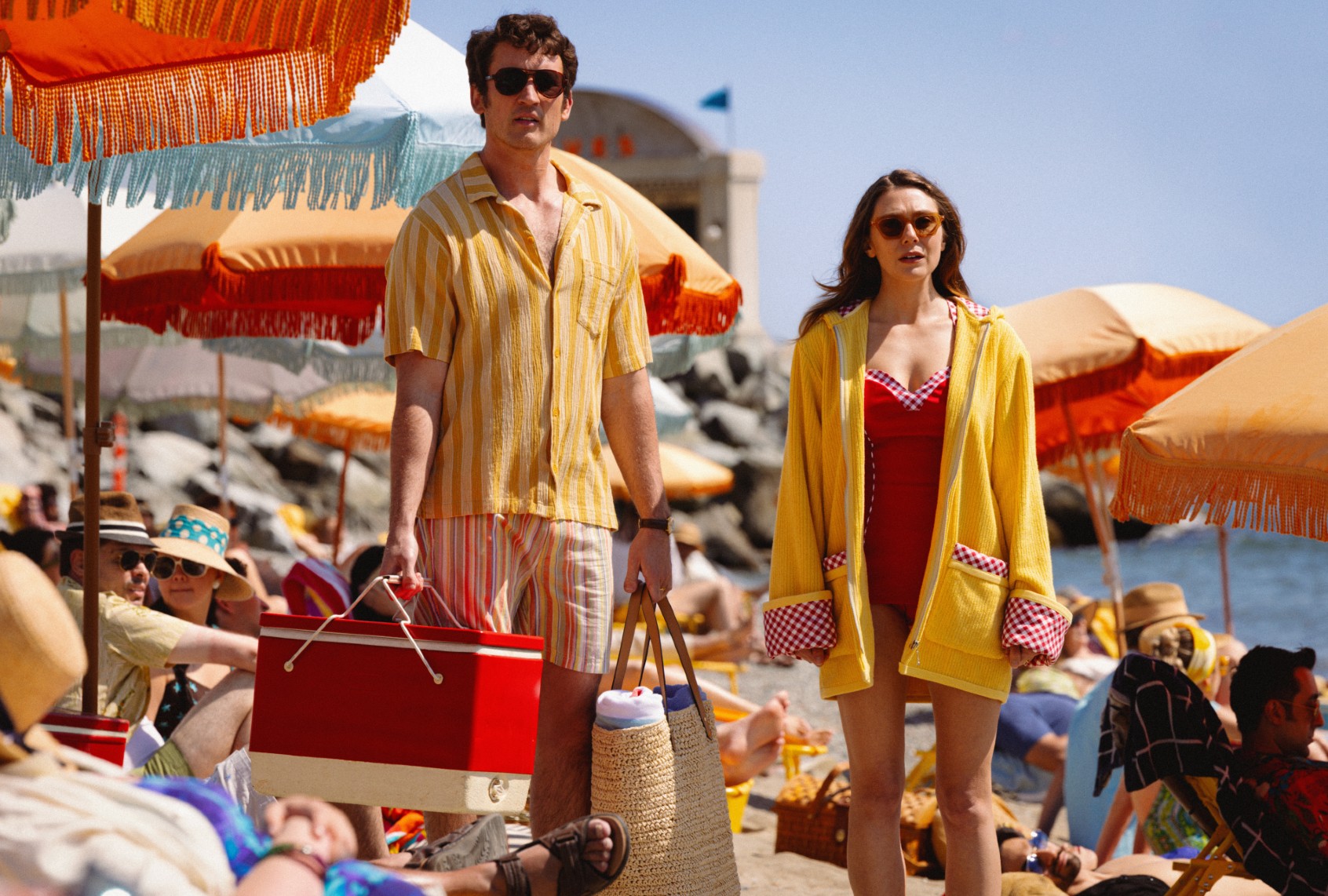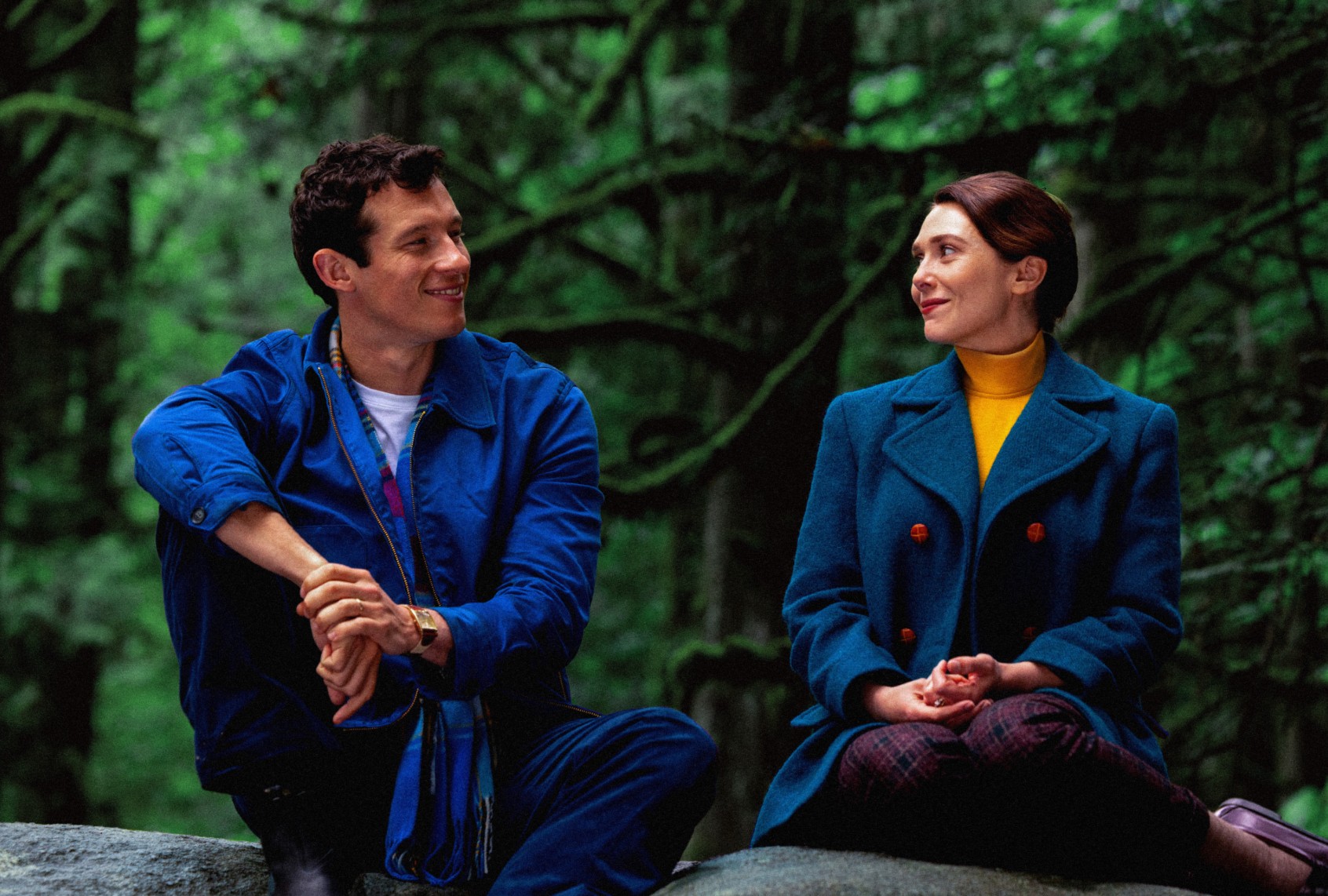Death is not suited to the Type A personality. For those who take great care in planning their lives down to the very last letter, our eternal demise presents a uniquely challenging conundrum: How does one prepare for the one aspect of life where there is no data, no insight, no facts and no instructions on where to park? There’s a wicked irony in micromanaging your entire life on Earth only to croak and have your soul potentially jettisoned to some formless state of being, entirely unknown to mere mortals. And that’s assuming that the hereafter is any kind of tangible location at all. Is the afterlife a place, or is it just an endless void — and, if so, does the void provide snacks?
In David Freyne’s lovely new film, “Eternity,” all those logistics are taken care of courtesy of afterlife coordinators (or ACs, for short), who meet newly deceased souls in a pseudo-purgatory called the Junction to help them choose the forever that’s right for them. For those who dread the one thing they can’t prepare for, “Eternity” is an IV drip of sweet solace. In this distinctly unpredictable time, Freyne’s film offers the simple comfort of a worry-free afterlife, one less thing to fret about among the deluge of global strife. What happens to us when we die is a question that has plagued the human mind since the beginning of time, a biologically ingrained fear so widespread that it’s the basis of almost every religion. We look to invisible gods and ancient texts to guide us toward whatever idea of the next world best harmonizes with our personal dogma. But for the not-so-devout (or even the spiritually inclined who are seeking a little entertainment), there’s the movies.
(Leah Gallo/A24) John Early and Da’Vine Joy Randolph in “Eternity”
Instead of plopping us into an eternity in media res, Freyne introduces something novel to this process: a choice. Imagine if death were also a one-way ticket to the tailor-made paradise of your desire. If we could have any afterlife we want, what’s left to want?
What better way to make the afterlife slightly less terrifying than to see a version of it with our own eyes on the silver screen, whatever that interpretation might resemble. It’s all smoke and mirrors, sure, but there’s a certain comfort in a life after death where Patrick Swayze can still spin pottery! “Ghost” is for the lovelorn ceramics obsessives; “Soul” for the jazz lovers; “Beetlejuice” for the freaks. And while “Eternity” is billed as a romantic comedy about Joan (Elizabeth Olsen), a recently deceased woman who must decide which of the two loves of her life to spend forever with, it’s more accurately a study in why films about the afterlife still resonate. Freyne breaks down the subgenre’s tropes and rebuilds them with commendable charm and visual flair, both scrutinizing and celebrating our obsession with the on-screen afterlife, and analyzing the human desire for certainty in an existence where nothing is sure.
Even before their deaths, Joan and her husband Larry (Miles Teller) have been searching for assurance. The contemporary, Earthly versions of the characters, played by Betty Buckley and Barry Primus at the start of their film, bicker on their way to their daughter’s gender reveal party. Joan thinks it’s a nice thing to do, while Larry believes it’s newfangled and useless. Naturally, the couple segues into another disagreement, arguing about where to spend their upcoming vacation — a hot-button issue, since Joan’s cancer treatments are no longer working and time is suddenly precious. Joan wants a mountain getaway and Larry thinks it would be nice to spend time at the beach. The only thing the couple of 65 years can align on is that they have to tell their daughter that Joan’s prognosis is now a matter of “when,” and not “if.”
When Larry chokes on a crudité at the party, all of those spats are moot. Soon, he finds himself on a train to the Junction, where his AC, Anna (a perfectly cast Da’Vine Joy Randolph), is waiting. Those familiar with Albert Brooks’ 1991 comedy “Defending Your Life” will recognize parts of Freyne and co-writer Patrick Cunnane’s high-concept heaven-in-waiting. The film’s conceit borrows several elements from Brooks’ classic, with a few key differences. In “Eternity,” there is no interim where a soul awaits their judgment. Here, every person — the good, bad and the ugly — gets their own afterlife. Just as humans are all the same at birth, they’re alike in death, too, afforded an equal opportunity to find their ideal eternity. And with such varied places like Studio 54 World (with no AIDS crisis!), Bromance World, Capitalist World and Man-Free World, there’s an option for everyone, even though Man-Free World does come with quite the waiting list.

(Leah Gallo/A24) Miles Teller and Elizabeth Olsen in “Eternity”
Larry is to spend the next week considering afterlife options, all the while worrying that he’ll be gone before Joan gets to the Junction, given that there’s no certainty with her illness. This allows Freyne the time to expand his world even more, and the viewer the chance to relish the film’s detailed production design. The wide assortment of different afterlife options does provide some chucklesome comedy, but the Junction’s real strength as a set piece is in deceptively encouraging the audience to silently consider what their picture of a perfect forever looks like. Instead of plopping us into an eternity in media res, with its own rules and regulations already in place, Freyne introduces something novel to this process: a choice. Imagine if death were also a one-way ticket to the tailor-made paradise of your desire. If we could have any afterlife we want, what’s left to want? For Larry, it’s love.
But Larry’s got competition. Soon after Joan dies and arrives at the Junction, the two meet Luke (Callum Turner), Joan’s first husband, who died in the Korean War. Luke has been waiting 65 years, doing menial work as a bartender in the Junction, hoping to be reunited with his love. Now, Joan has two impossible choices to make: Which of her great loves will she pick, and where will they spend their shared forever?
“Eternity” is far more concerned with making viewers feel than with offering them an unconventional ending. Freyne and Cunnane want their audience to consider the power of love, fear and nostalgia all at once, analyzing exactly why we’re so enamored by cinematic tales of the afterlife.
It’s at this impasse that Freyne and Cunnane’s screenplay starts to spin its wheels trying to find the right intersection between comedy and romance. Joan’s decision should conceivably be easy; obviously, you’d choose to spend eternity with the person you were married to for six decades as opposed to someone you were married to for a blip. But there’s an appeal to Luke’s uncertainty. Not only has she grieved him her whole life, but she’s grieved the possibility of all they could’ve been. Maybe this is her chance to bid adieu to the beautiful life she had on Earth with Larry and see what the future holds with Luke. Larry’s the pragmatic choice, but Luke is the romantic one, down to his handsome, chiseled features right out of a supermarket paperback. (A credit to Teller, who lets his looks be repeatedly whacked in service of the film.)

(Leah Gallo/A24) Callum Turner and Elizabeth Olsen in “Eternity”
With even a bit of sense, you’ll be able to see where “Eternity” is headed. Though like life, this is about the journey, not the destination. The film is far more concerned with how it can make viewers feel than with offering them an unconventional ending. Freyne and Cunnane want their audience to consider the power of love, fear and nostalgia all at once, analyzing exactly why we’re so enamored by cinematic tales of the afterlife. We spend our lives seeking some livable, sustained happiness. And, depending on whether or not we’re able to find it, we fear losing that good life to death, or hope that death will bring the joy we couldn’t always grasp in life. Films are a chance to work out these nagging, existential neuroses that live in the back of the mind, the type that overwhelm to the point of panic if thought about for too long. What’s after this? Will we get to see the ones we love again, and what if we don’t? What if we had to choose between the one we lost too early and the one we didn’t? Like any difficult choice, there are pros and cons to both sides. The one great thing about death is that it takes the guesswork out of all of this, or at least it’s supposed to. Maybe having too much control over our destiny is a bad thing after all.
Want more from culture than just the latest trend? The Swell highlights art made to last.Sign up here
If there’s one thing “Eternity” wants from its viewer, it’s for them to move on, release the human longing for control. We want to know it all, to see every vision of the next life and spend our lives doing whatever we can to get there. We mourn and grieve, we miss those we’ve lost or said goodbye to, and we pursue both love and memory with such fervency that the rest of the world blurs. There’s a romanticism to living a life entirely in service of an intangible step beyond, but waiting for some vague, unpromised forever is a waste of what precious time we have now.
That’s exactly why being constantly reminded of our mortality is so frustrating. It’s impossible to forget that this could all go away at any second when death and destruction are piped into our brains from every screen in America. “Eternity” understands the desperation for a modicum of autonomy in this world, yet cleverly reminds viewers that having a choice doesn’t necessarily make life any easier. Choosing one place to live in forever will inevitably have its drawbacks, even if the idea is sold as paradise, and deciding between two great loves will always leave someone heartbroken. If death releases us from these impossible choices, “Eternity” celebrates the beauty in that uncertainty, whatever it may look like.
Read more
about movies that tackle the afterlife


























